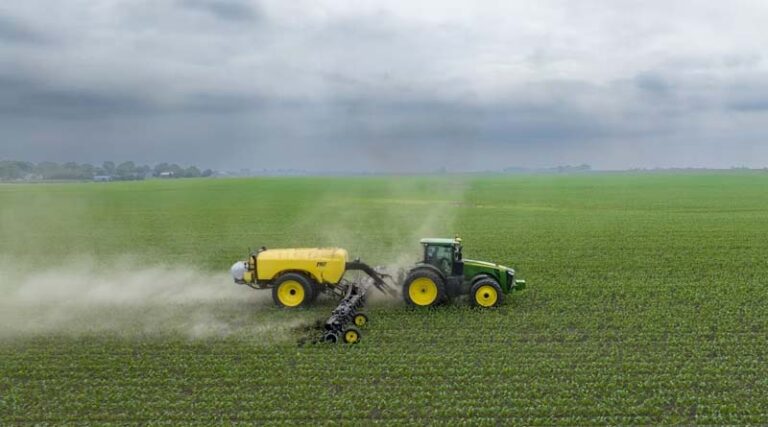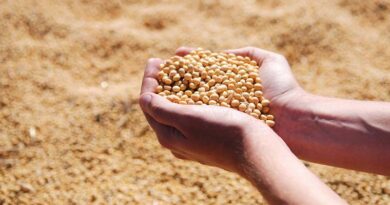
Fertilizer Prices in Brazil: Geopolitics, Logistics, and the Search for Domestic Alternatives
28 August 2025, São Paulo: Fertilizer prices in Brazil have been climbing due to a mix of geopolitical tensions, higher freight costs, and the country’s continued dependence on imports. Despite these pressures, demand is expected to remain stable as farmers prioritize soil fertility and adopt more affordable domestic phosphate alternatives. In an interview, Felipe Coutas of Itafos discusses the factors driving price increases, the sector’s logistical challenges, and the investments needed for Brazil to strengthen local production and reduce its vulnerability to global shocks.

Why are fertilizer prices rising?
Felipe Coutas – The price increase is related to a combination of geopolitical, logistical, and structural factors. International conflicts have made maritime freight more expensive and impacted supply chains, such as sulfur and natural gas. In addition, Brazil still depends heavily on fertilizer imports, which makes us more vulnerable to exchange rate fluctuations and global conditions.
Will there be a demand reduction?
Felipe Coutas – Itafos believes that demand will remain steady, albeit with occasional adjustments due to cost. Brazilian farmers are aware of the importance of maintaining soil fertility and tend to seek more efficient and affordable alternatives, such as domestic phosphate fertilizers. Therefore, we see room for products such as reactive natural phosphate and partially acidulated phosphate meal and granules, which deliver technical results at a more affordable cost.
Will the sector close 2025 with positive results?
Felipe Coutas – It is still too early to say. However, the signs are positive, especially for players with integrated production, close relationships with farmers, efficient logistics, and a technical portfolio. In our case, the resumption of Arraias, our entry into the granular fertilizer market, and our consolidation in the Cerrado Region are driving us forward.
Does Brazil have the capacity to reduce its dependence on fertilizer imports? What investment would be required?
Felipe Coutas – Brazil does have this capacity, but it depends on a structured long-term plan. Today, more than 80% of the fertilizers used in the country are imported. This makes Brazil vulnerable to exchange rate fluctuations and international crises.
The National Fertilizer Plan is a good start, but it needs to be implemented with legal certainty, structural incentives, and state policies. The estimated investment is significant; meanwhile, as each project involves considerable sums, which will only come if there is regulatory predictability and access to inputs such as gas and sulfur on competitive terms.
The way forward is to integrate production with the deposit, as we do in Arraias. This reduces external dependence, improves logistical efficiency, and strengthens national sovereignty over a strategic input.
Is dependence on road transport still a bottleneck for the sector?
Felipe Coutas – Yes. The fertilizer sector still depends on road transport, and logistics remains one of the biggest obstacles for the fertilizer sector in Brazil. Although there has been some progress in railways, dependence on road transport is still very high.
Between 2010 and 2022, rail transport of fertilizers grew by 23%, but demand increased by more than 80% in the same period, keeping trucks as the main means of transport.
This implies high costs, seasonal bottlenecks, and the risk of shortages. Therefore, we believe that producing close to the deposits, with vertical integration, in addition to expanding railways and logistics corridors, are essential initiatives to cut logistics costs, ensure agility in supply, and improve the competitiveness of agribusiness as a whole.
Could the production of batteries for electric cars affect the fertilizer sector?
Felipe Coutas – The LFP (lithium-iron-phosphate) battery industry has been growing and may generate competition for inputs in the medium and long term. It is still too early to measure direct impacts, but it is a point of attention — especially if investments in fertilizers are not proportional to the projected demand for multiple sectors, which requires strategic attention and planning to avoid bottlenecks.
Brazil needs to prepare for this by strengthening its local production, diversifying the origin of inputs, and anticipating global movements.
Itafos left the country during the pandemic. What made the company return?
Felipe Coutas – The Arraias plant was temporarily mothballed at the end of 2019, in a context of international restructuring and market instability.
The return, which began in 2022, came after a strategic review that recognized Brazil as a key market with potential for sustainable growth, appreciation of local products, and alignment with the National Fertilizer Plan agenda. Since then, Itafos has been showing important results and growth.
Today, we operate vertically, with our production, regionalized logistics, and a focus on innovation and sustainability. We are investing heavily in the country, with more than US$ 17.89 million invested in Brazil from 2022 to 2024.
We project continued growth until 2026, with Itafos becoming a relevant supplier on the national scene. Our product is fully synergistic with the region’s crops, and we want to be increasingly closer to those who make agriculture happen.
Source: AgriBrasilis
Also Read: Possible Decline in Wheat Production in India, Says Agriculture Minister
📢 If You’re in Agriculture, Make Sure the Right People Hear Your Story.
From product launches to strategic announcements, Global Agriculture offers unmatched visibility across international agri-business markets. Connect with us at pr@global-agriculture.com to explore editorial and advertising opportunities that reach the right audience, worldwide.






